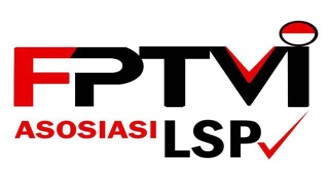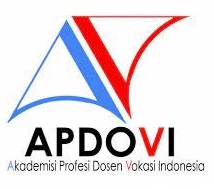Design and performance testing of a safety instrumented system for water level control simulator using plc with cause-effect matrix implementation
Abstract
Safety Instrumented Systems (SIS) are widely employed in industrial settings to ensure operational safety and prevent system failures that could pose risks to the environment, personnel, and assets. This research presents the design of an SIS for a water level control system, utilizing Programmable Logic Control (PLC) to enhance safety and mitigate the risk of leakage or flooding. The SIS design is developed based on the Layers of Protection Analysis (LOPA) methodology, incorporating multiple protective layers, including water level measurement instruments, controllers, and final control elements to manage risk effectively. Following the LOPA-based design process, system testing was conducted using a cause-and-effect matrix to evaluate performance under various operational scenarios. The findings indicate that implementing SIS in water level control systems significantly enhances operational safety. In simulated test conditions, the SIS effectively detected potentially hazardous situations, such as excessive water levels that could lead to overflow or dangerously low levels that might disrupt process continuity. The system then executed appropriate mitigation measures, such as alerting operators or automatically shutting off water flow, to prevent accidents and equipment damage. The results demonstrate that integrating an SIS into water level control systems provides substantial benefits in managing operational risk, ensuring system reliability, and safeguarding industrial processes.
Keywords
Full Text:
PDFReferences
REFERENCES
L. S. L. Fernandes, J. B. A. Paulo, and J. A. Oliveira, Development of a strategy to monitor and control the oil-water interface level of a liquid-liquid separator for treatment of wastewater using an image-based detector, vol. 27, no. C. Elsevier Inc., 2009.
L. Qiu et al., “Study on water level control system of natural circulation steam generator,” Prog. Nucl. Energy, vol. 153, no. September, p. 104436, 2022.
L. Ye, “The Design of Practice Training System Based on PLC Programmable Automatic Control,” Proc. 2015 Int. Conf. Intell. Syst. Res. Mechatronics Eng., vol. 121, pp. 1931–1934, 2015.
M. A. Sehr et al., “Programmable Logic Controllers in the Context of Industry 4.0,” IEEE Trans. Ind. Informatics, vol. 17, no. 5, pp. 3523–3533, 2021.
Kevin J. Mitchell, P. Hereña, T. M. Longendelpher, and M. C. Kuhn, Kenexis - Safety Instrumented Systems Engineering Handbook. 2010.
P. Gruhn and H. Cheddie, Safety Instrumented Systems Analysis, vol. 255. 2006.
R. J. Willey, “Layer of protection analysis,” Procedia Eng., vol. 84, pp. 12–22, 2014.
F. Crawley, “Layer of Protection Analysis (LOPA),” A Guid. to Hazard Identif. Methods, pp. 57–69, 2020.
B. Schrörs, “Functional Safety: IEC 61511 and the industrial implementation,” INSS 2010 - 7th Int. Conf. Networked Sens. Syst., pp. 45–48, 2010.
T. Stauffer and P. Clarke, “Using Alarms as a Layer of Protection,” Process Saf. Prog., vol. 25, no. 4, pp. 326–330, 2015.
M. Giovani and E. Bonet, “A Comparison of Model Checking Techniques for Cause and Effect Matrix Based Controller Logic of Safety Instrumented Systems,” 2019.
T. Hamaguchi, B. Mondori, K. Takeda, N. Kimura, and M. Noda, “A method for generation and check of alarm configurations using cause-effect matrices for plant alarm system design,” Lect. Notes Comput. Sci. (including Subser. Lect. Notes Artif. Intell. Lect. Notes Bioinformatics), vol. 9173, pp. 549–556, 2015.
DOI: http://dx.doi.org/10.12962%2Fj27213560.v4i1.22735
Refbacks
- There are currently no refbacks.
Jurnal Nasional Amori licensed under a Creative Commons Attribution-NonCommercial-ShareAlike 4.0 International License.
Based on a work at https://iptek.its.ac.id/index.php/amori






